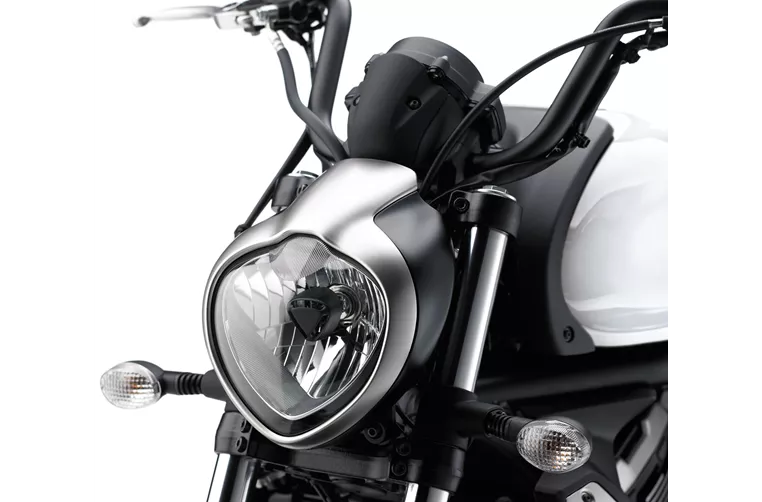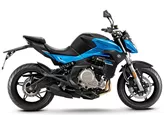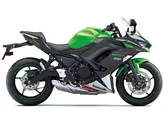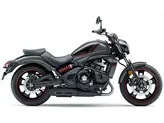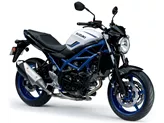Kawasaki Z650 2021 vs. Kawasaki Vulcan S 2015

Kawasaki Z650 2021

Kawasaki Vulcan S 2015
Overview - Kawasaki Z650 2021 vs Kawasaki Vulcan S 2015
The Kawasaki Z650 2021 and the Kawasaki Vulcan S 2015 are both popular models from Kawasaki, but they have some notable differences.
Starting with the technical specifications, both bikes have the same engine type, bore, stroke, transmission, cylinders, cooling, and displacement. However, the Z650 has a slightly higher engine power of 68.2 HP compared to the Vulcan S's 61 HP. The Z650 also has a higher torque of 65.7 Nm compared to the Vulcan S's 63 Nm.
In terms of chassis, both bikes have a steel frame, but the Z650 has a tubular frame while the Vulcan S has a perimeter frame. This could affect the overall stability and handling of the bikes.
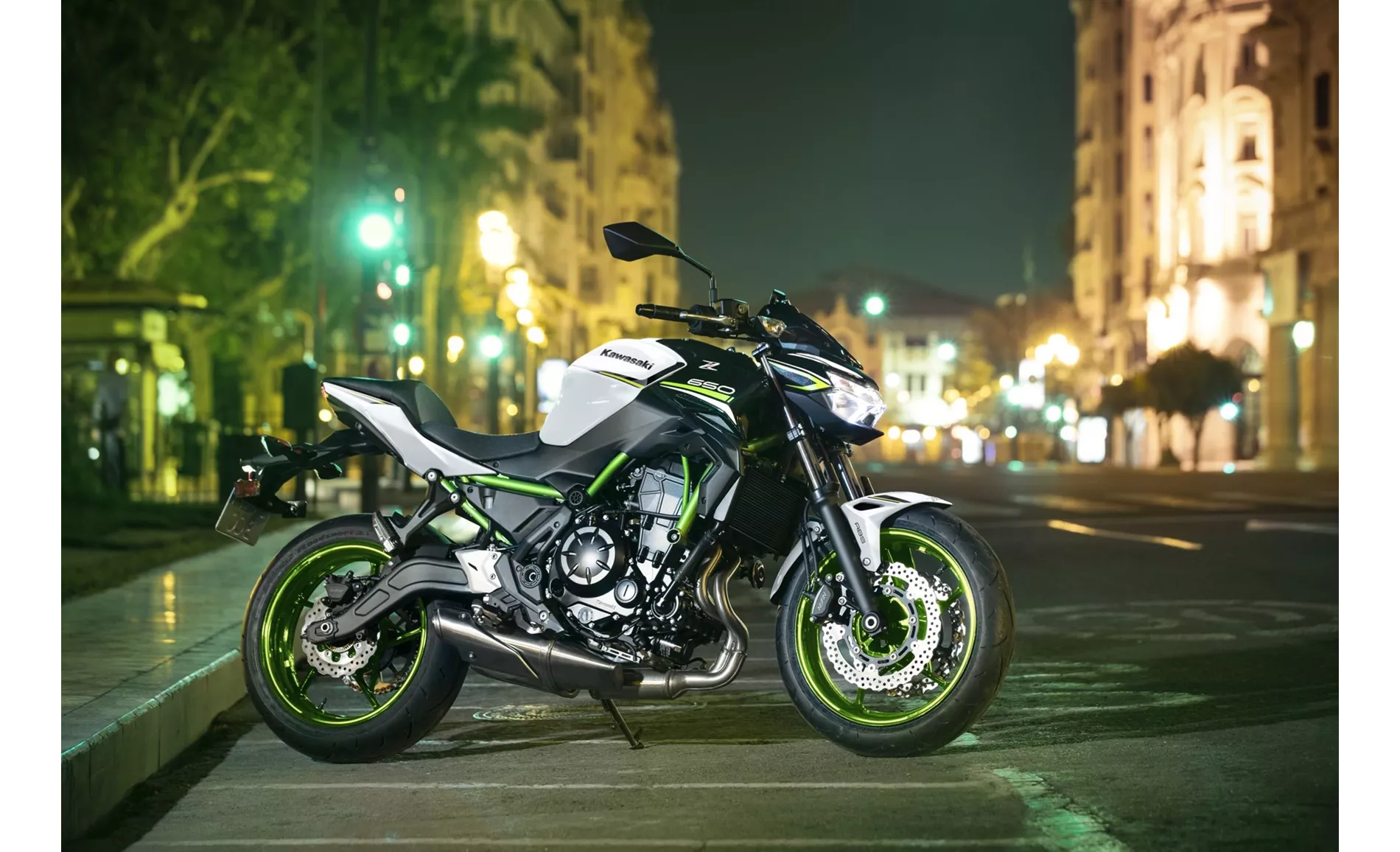
Kawasaki Z650 2021
When it comes to brakes, the Z650 has double disk brakes at the front with double piston calipers, while the Vulcan S has a single disk brake at the front with double piston calipers. This means that the Z650 may have better braking performance and control.
In terms of dimensions and weights, the Z650 has a front tire width of 120 mm and a front tire diameter of 17 inches, similar to the Vulcan S. However, the Z650 has a slightly wider rear tire width of 160 mm compared to the Vulcan S's 160 mm. The Vulcan S has a larger front tire diameter of 18 inches compared to the Z650's 17 inches. The Z650 also has a shorter wheelbase of 1410 mm compared to the Vulcan S's 1575 mm. The seat height of the Z650 is 790 mm, while the Vulcan S has a lower seat height of 705 mm. The Z650 is also lighter with a kerb weight of 187.1 kg compared to the Vulcan S's 228 kg. Both bikes have a similar fuel tank capacity, with the Z650 having 15 liters and the Vulcan S having 14 liters.
Moving on to the strengths of each bike, the Z650 has an accessible two-cylinder engine, compact dimensions, and a low seat height, making it suitable for riders of all sizes. It also has a stable chassis and a TFT display with connectivity, providing a modern and convenient riding experience. Additionally, the Z650 has a grown-up look, appealing to riders who prefer a more mature aesthetic.
On the other hand, the Vulcan S has a rev-happy engine that performs well in both high and low rev ranges. It also has decent brakes with ABS, ensuring safe and reliable stopping power. The Vulcan S has an idiosyncratic look, standing out from other cruisers on the market. It also features a narrow rear tire, making it highly maneuverable. The Vulcan S offers an Ergo-Fit system, allowing riders to customize the bike for optimum comfort and fit. The chassis of the Vulcan S is sufficiently comfortable, providing a smooth and enjoyable ride.

Kawasaki Vulcan S 2015
However, both bikes have their weaknesses. The Z650 may be uncomfortable for taller riders due to its compact dimensions. Additionally, some riders may find the adrenaline level in the saddle to be lower compared to other bikes in its class.
The Vulcan S's weaknesses include the fact that the Ergo-Fit system costs extra, limiting its accessibility. The wind protection on the Vulcan S is moderate, which could affect comfort during long rides. Lastly, the gear indicator is only available as an option, which may be inconvenient for some riders.
In conclusion, the Kawasaki Z650 2021 and the Kawasaki Vulcan S 2015 have their own unique strengths and weaknesses. The Z650 offers a sportier and more modern riding experience, while the Vulcan S provides a comfortable and customizable cruiser option. Riders should consider their preferences and priorities to choose the bike that best suits their needs.
Technical Specifications Kawasaki Z650 2021 compared to Kawasaki Vulcan S 2015
Pros and Cons in comparison
Pros and Cons in comparison
Kawasaki Z650 2021

Even in 2021, the Kawasaki Z 650 stands for easy riding with great looks and good equipment. Both seat height and engine are very accessible and will give both experienced riders and newcomers a lot of pleasure. If you are looking for an honest naked bike without any big surprises, this is the bike for you. Due to its compact dimensions, however, you should try it out before buying and perhaps go for the raised seat.
Kawasaki Vulcan S 2015

The Vulcan S is reinvigorating the "small" mid-size cruiser scene - not only because of its unique design, but also because it is so easy to ride and is aimed at beginners. The low seat height and the narrow saddle help the rider to stand securely on the ground, while the low centre of gravity also makes for easy and safe handling. The engine also fits in well with the uncomplicated appearance, can be revved up decently from 2000 rpm and only stops at around 10,000 rpm - something that has never been seen before in a cruiser. The "Ergo-Fit" system, which varies the seat height, the rider's distance from the handlebars and the footrests, costs extra but also allows the Vulcan S owner generous customisation options.
Price Comparison Avarage Market Price Kawasaki Z650 vs Kawasaki Vulcan S
There are a few key differences between a Kawasaki Z650 2021 and a Kawasaki Vulcan S 2015. In terms of price, the actual average prices of both motorbikes are almost the same. Compared to Kawasaki Vulcan S 2015 there are more Kawasaki Z650 2021 bikes available on the 1000PS.de Marketplace, specifically 25 compared to 8. It takes less time to sell a Kawasaki Vulcan S with 75 days compared to 106 days for the Kawasaki Z650. Since model year 2017 1000PS.de editors have written 31 reviews for the Kawasaki Z650 and 13 reviews for the Kawasaki Vulcan S since model year 2015. The first review for the Kawasaki Z650 was published on 11/8/2016 and now has more than 25,000 views. This compares to more than 14,800 views for the first review on Kawasaki Vulcan S published on 10/16/2014.

